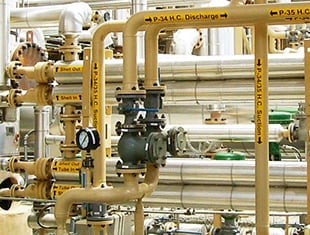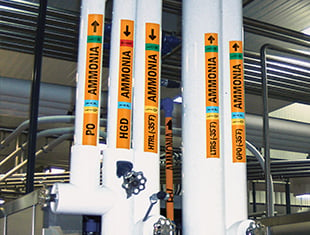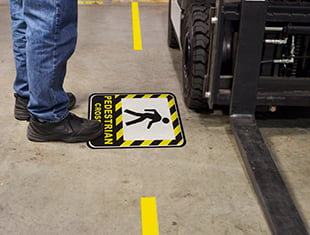Preparing for Facility Emergencies
Webinar | Preparing for Facility Emergencies
Preparing for Facility Emergencies
Prepare your facility against any disaster, and improve general safety at the same time. In this 15-minute webinar, learn the basics of what can go wrong, how to respond, and what you can do to prepare your workplace.
 14:10 MINS
14:10 MINS Presented By

Brian McFadden
Technical Writer
Compliance Specialist
Transcript
Webinar Preview
Contents of the Preparing for Facility Emergencies Webinar:
- Know What Can Go Wrong
- Safe Assumptions: Low Visibility and Fire
- Facility Assessments
- How Should People Respond?
- Fight, Flee, or Find Shelter
- EAP
- How to Prepare
- Exit Signage
- Wayfinding
- Training and Rehearsal
- Solutions from DuraLabel
Excerpt from the Preparing for Facility Emergencies Webinar transcript:
Know What Can Go Wrong
When you think about disaster preparedness, you probably imagine hurricanes, tornadoes, or earthquakes. But Mother Nature isn't the only threat to the safety of your employees and the steady progress of your work; often chemical spills and manufacturing accidents can have similar effects on health and productivity.
If there are so many possible problems to face, how can you prepare for each of them? Rather than trying to address each possibility separately, it can be helpful to keep a wide scope. This reduces the chance that an unexpected type of crisis will catch you unprepared, and it helps you develop general safety practices for your facility.
Safe Assumptions: Low Visibility and Fire
According to OSHA's guide to workplace emergencies, crisis situations that affect the workplace can range from floods and hurricanes to chemical spills and explosions. Despite the variety of possible disasters, there are two conditions likely to accompany any crisis situation: low visibility and fire.
Power outages are often the first symptom of a crisis situation, and a dark workspace can jump from an annoyance to a life threatening situation extremely quickly. Even when power doesn't go out, some disasters still create low visibility - especially if there is something in the air. Industrial fires can produce smoke, chemical spills can obscure the air with clouds of mist or vapor, and a volcanic eruption can create enough debris to darken the entire planet. With this in mind, it will probably be hard to see when disaster strikes.
The next assumption should be that a fire will break out. Often, fires are a secondary effect of other disasters: damaged equipment can shoot sparks in dry areas, earthquakes rip gas lines apart, and lightning strikes can exceed the surface temperature of the sun. The National Fire Prevention Association, or NFPA, states that 37,000 fires happen in industrial or manufacturing facilities each year, often resulting in injuries or fatalities.
While low visibility and high risk of fire aren't the only possible dangers, they represent two of the major hazards that you'll want to prepare for.
Facility Assessments
While these hazards are common across many different situations and in many different facilities, your workplace is unique. To prepare effectively, you need to know how a potential disaster will affect your own facility - that is, you need to perform a facility assessment.
Facility Assessments can be part of many other safety practices, but in this case, we're just talking about finding the areas in your workplace that could be problem points during a crisis or disaster. Are there places where workers could get lost or confused, especially with low light conditions, smoke, or fire? Are there dead ends or closed rooms where workers could become trapped? Are there parts of the workplace, like chemical storage locations, that workers need to stay away from during a disaster?
Try to find all locations in your facility where there might be any confusion or additional danger, and make a list of these areas. Think about areas of decision in your building: intersections, stairwells, and corridors.
It's important to remember that in a crisis situation, people can behave irrationally. Some employees on September 11th actually took the time to shut down their computers and collect their belongings before heading to the stairs to evacuate. Work under the assumption that employees will need all the direction and aid you can possibly provide in a crisis, and you will be more effective at finding hazard areas.
To learn the about common types of visual signals, and practical guidance on maximizing the value of visuals in your facility, watch the full webinar on demand now!
Related Resources

Practical Pipe Marking
Presented By Brian McFadden Technical Writer Compliance Specialist Related Resources Ammonia Pipe Marking ...
Watch Now
Ammonia Pipe Marking
Presented By Brian McFadden Technical Writer Compliance Specialist Related Resources Ammonia Pipe Marking ...
Watch Now
Productive Floor Marking
Presented By Brian McFadden Technical Writer Compliance Specialist Related Resources Floor Marking Placement ...
Watch Now.png)





